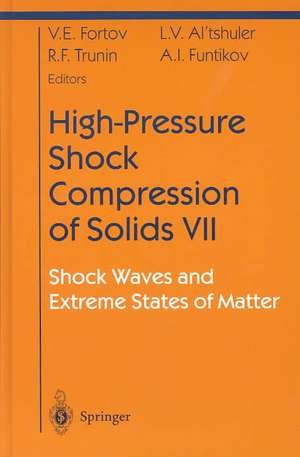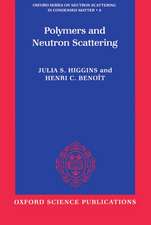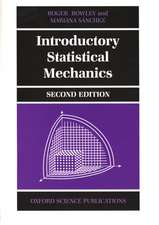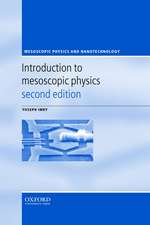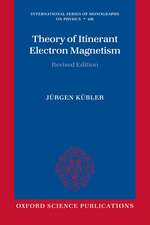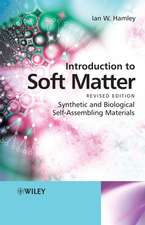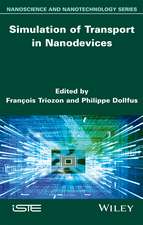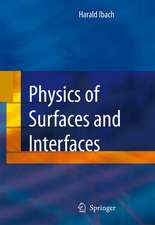High-Pressure Shock Compression of Solids VII: Shock Waves and Extreme States of Matter: Shock Wave and High Pressure Phenomena
Autor Vladimir E. Fortov, L.V. Altshuler, R.F. Trunin, A.I. Funtikoven Limba Engleză Hardback – 8 apr 2004
| Toate formatele și edițiile | Preț | Express |
|---|---|---|
| Paperback (1) | 1229.10 lei 6-8 săpt. | |
| Springer – 29 noi 2010 | 1229.10 lei 6-8 săpt. | |
| Hardback (1) | 1235.25 lei 6-8 săpt. | |
| Springer – 8 apr 2004 | 1235.25 lei 6-8 săpt. |
Din seria Shock Wave and High Pressure Phenomena
- 15%
 Preț: 651.67 lei
Preț: 651.67 lei - 24%
 Preț: 804.04 lei
Preț: 804.04 lei - 18%
 Preț: 2099.77 lei
Preț: 2099.77 lei - 18%
 Preț: 1111.97 lei
Preț: 1111.97 lei - 15%
 Preț: 645.28 lei
Preț: 645.28 lei - 18%
 Preț: 948.29 lei
Preț: 948.29 lei - 15%
 Preț: 532.38 lei
Preț: 532.38 lei - 18%
 Preț: 1132.65 lei
Preț: 1132.65 lei - 18%
 Preț: 1228.96 lei
Preț: 1228.96 lei -
 Preț: 397.01 lei
Preț: 397.01 lei - 18%
 Preț: 949.10 lei
Preț: 949.10 lei - 15%
 Preț: 634.32 lei
Preț: 634.32 lei - 18%
 Preț: 1541.47 lei
Preț: 1541.47 lei - 24%
 Preț: 1040.57 lei
Preț: 1040.57 lei - 15%
 Preț: 642.03 lei
Preț: 642.03 lei - 18%
 Preț: 892.90 lei
Preț: 892.90 lei - 20%
 Preț: 560.55 lei
Preț: 560.55 lei - 18%
 Preț: 1390.73 lei
Preț: 1390.73 lei - 18%
 Preț: 947.50 lei
Preț: 947.50 lei - 18%
 Preț: 957.44 lei
Preț: 957.44 lei - 18%
 Preț: 1126.69 lei
Preț: 1126.69 lei -
 Preț: 384.70 lei
Preț: 384.70 lei - 15%
 Preț: 649.39 lei
Preț: 649.39 lei - 18%
 Preț: 1382.21 lei
Preț: 1382.21 lei -
 Preț: 392.21 lei
Preț: 392.21 lei - 15%
 Preț: 596.36 lei
Preț: 596.36 lei - 18%
 Preț: 1554.72 lei
Preț: 1554.72 lei - 18%
 Preț: 1228.29 lei
Preț: 1228.29 lei - 15%
 Preț: 644.30 lei
Preț: 644.30 lei - 18%
 Preț: 891.80 lei
Preț: 891.80 lei - 18%
 Preț: 951.14 lei
Preț: 951.14 lei - 15%
 Preț: 534.82 lei
Preț: 534.82 lei -
 Preț: 391.79 lei
Preț: 391.79 lei
Preț: 1235.25 lei
Preț vechi: 1506.40 lei
-18% Nou
Puncte Express: 1853
Preț estimativ în valută:
236.44€ • 256.91$ • 198.74£
236.44€ • 256.91$ • 198.74£
Carte tipărită la comandă
Livrare economică 21 aprilie-05 mai
Preluare comenzi: 021 569.72.76
Specificații
ISBN-13: 9780387205755
ISBN-10: 0387205756
Pagini: 534
Ilustrații: XXII, 534 p.
Dimensiuni: 155 x 235 x 30 mm
Greutate: 0.95 kg
Ediția:2004
Editura: Springer
Colecția Springer
Seria Shock Wave and High Pressure Phenomena
Locul publicării:New York, NY, United States
ISBN-10: 0387205756
Pagini: 534
Ilustrații: XXII, 534 p.
Dimensiuni: 155 x 235 x 30 mm
Greutate: 0.95 kg
Ediția:2004
Editura: Springer
Colecția Springer
Seria Shock Wave and High Pressure Phenomena
Locul publicării:New York, NY, United States
Public țintă
ResearchCuprins
1 Development of Dynamical Methods of Investigation of High Pressures in Russia.- 2 Detonation of Condensed Explosives.- 3 Hugoniot Curves of Metals.- 4 Wide-Range Characteristic Thermodynamic Curves.- 5 Shock-Wave Compression of Porous Metals.- 6 Shock Waves and Polymorphic Phase Transformations in Solids.- 7 Phase Diagram of Iron.- 8 Some Questions of Phase Transition in Shock Waves.- 9 Kinetics of Shock-Induced Phase Transition of Quartz.- 10 Shear Strength and Viscosity of Metals in Shock Waves.- 11 Temperature Measurement and Equation of State of Condensed Matter.- 12 Isentropic Compressibility and Equation of State of Hydrogen up to 1 TPa.- 13 Modification of the van der Waals Model for Dense States of Matter.- 14 Thermodynamic Properties of Shock-Compressed Plasmas Based on a Chemical Picture.- 15 Fracture of Structures Caused by Explosive Loading: Scale Effects.
Textul de pe ultima copertă
In the mid-1950s, experimental studies of condensed matter at ultrahigh pressures (i.e., high energy densities) started to appear in the literature, made possible by use of strong shock waves to alter the state of the material studied. Since then, laboratory and underground nuclear test results have provided equation-of-state data for many chemical elements and compounds over a very wide range of thermodynamic states. They have also allowed scientists to determine high pressure melting curves, to discover previously unknown electronic transitions, to produce strongly non-ideal plasmas, and to study phenomena that occur at much higher values of physical parameters than are attainable by other methods. The data are of fundamental scientific value, and knowledge of shock-wave properties of materials and their equations of state over a wide range of the thermodynamic variables is necessary for the solution of many important scientific and technical problems.
Shock Waves and Extreme States of Matter presents a detailed account of the development of Russian technology for conducting dynamic experiments to study material properties and behavior and some of the basic results so far obtained. The book consists of surveys prepared by the leading Russian scientists in the field. Experimental and theoretical results of the authors are presented and a generalization and systematization of the extensive material on the physics of shock waves and high-pressure phenomena is provided.
Topics discussed include:
Development of dynamic research techniques for studying high pressure
Problems of detonation of condensed explosives and creation high-velocity-impact devices
Shock compression data that reach a maximum pressure of 10 TPa in solid and highly porous metals. Computational models and descriptions of experimental data include wide-range Hugoniots for 80 substances
Mechanisms, kinetics and thermodynamics of polymorphic transformations
Experimental, theoretical, and computational investigations of the response of metals in the range of elastic–plastic deformation
Optical temperature measurements on ionic crystals and liquid argon and xenon that permit development of improved equations of state of these materials and extend the melting curves of ionic crystals
Quasi-isentropic compression data for molecular hydrogen and deuterium and the parameters of a new EOS for the solid and liquid phases
Both a semiempirical extension of van der Waals’ model oriented toward experimental data description of dense states of matter and an a priori chemical model of highly non-ideal plasma produce wide-range EOSs
Fracture of large structures subjected to the action of dynamic forces.
Shock Waves and Extreme States of Matter presents a detailed account of the development of Russian technology for conducting dynamic experiments to study material properties and behavior and some of the basic results so far obtained. The book consists of surveys prepared by the leading Russian scientists in the field. Experimental and theoretical results of the authors are presented and a generalization and systematization of the extensive material on the physics of shock waves and high-pressure phenomena is provided.
Topics discussed include:
Development of dynamic research techniques for studying high pressure
Problems of detonation of condensed explosives and creation high-velocity-impact devices
Shock compression data that reach a maximum pressure of 10 TPa in solid and highly porous metals. Computational models and descriptions of experimental data include wide-range Hugoniots for 80 substances
Mechanisms, kinetics and thermodynamics of polymorphic transformations
Experimental, theoretical, and computational investigations of the response of metals in the range of elastic–plastic deformation
Optical temperature measurements on ionic crystals and liquid argon and xenon that permit development of improved equations of state of these materials and extend the melting curves of ionic crystals
Quasi-isentropic compression data for molecular hydrogen and deuterium and the parameters of a new EOS for the solid and liquid phases
Both a semiempirical extension of van der Waals’ model oriented toward experimental data description of dense states of matter and an a priori chemical model of highly non-ideal plasma produce wide-range EOSs
Fracture of large structures subjected to the action of dynamic forces.
Caracteristici
Presenting some of the most recent results of Russian research into shock compression, as well as historical overviews of the Russian research programs into shock compression, this volume will provide Western researchers with many novel ideas and points of view
